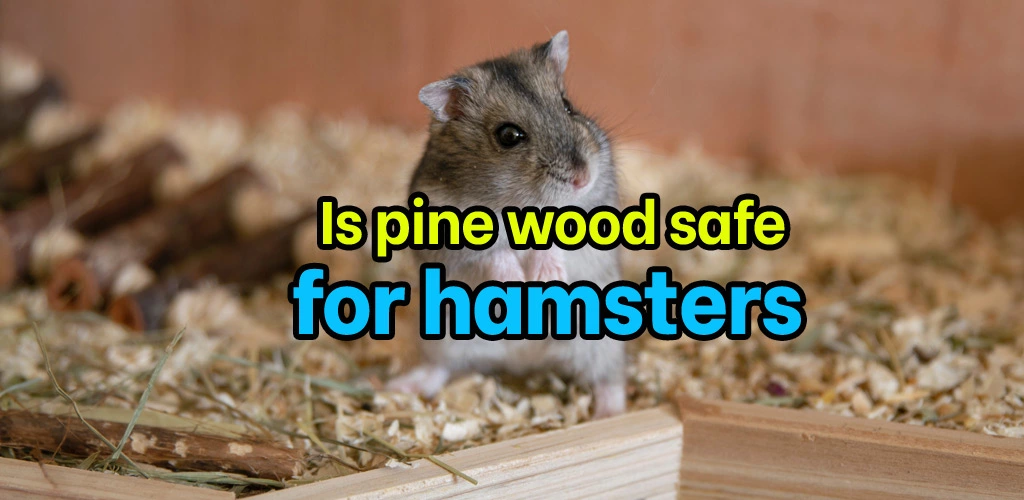Just like how humans need tiles and bricks to keep them safe and protected, hamsters also need shelter and beddings. Obviously, you wouldn’t want your little pets to be surrounded with toxic stuff. Knowing which materials to use and not to use is crucial.
Is pine safe for hamsters or is it one of the materials you need to avoid at all cost?

Table of Contents
Rules for safe bedding for hamsters
There are actually two main rules when it comes to safe bedding for hamsters. The first one is that bedding should give your hamster the chance to nest in and burrow comfortably. The bedding must also be water-soluble and free from toxins so that your pet can ingest, digest, then expel it in a safe way.
Is pine bedding safe for hamsters
Based on several studies, pine shavings in general have been found to be dangerous to hamsters. If the doses are large enough, pine bedding may even trigger some allergic reactions in people. Softwood shavings such as pine give off phenols or aromatic hydrocarbons as well as toxic acids that could cause damages to the windpipe or trachea and lungs of hamsters.
While there are pet supply manufacturers that often attest to the safety of their heat-treated shavings, there are still studies that state otherwise since not all types of toxins could be successfully and completely removed using heat treatment.
Most of the hamster bedding brands don’t indicate any information on the packaging when it comes to the specific composition or type of wood used for producing the shavings. The recommendation here is to always stay on the safe side and stay away from beddings that don’t clearly show a complete list of substances and ingredients.
Choose bedding with no scents
Will you feel great if you will live your whole life inside a perfume factory? For sure, this is not something you would want and the same thing applies to your hamster. This is especially because the noses of hamsters are keener than that of humans.
Their correspondingly delicate and sensitive respiratory systems are very prone to artificial chemicals found in scented bedding. Being exposed to scented bedding for a long time can make hamsters as well as other rodents to suffer from a plethora of breathing and health issues.
Although it is perfectly understandable that you want to mask those unwanted smells, never consider scented bedding as the best solution. This can pose hazard for hamsters and might even be deadly at times.
Cat litter bedding should only be used as base layer
Although paper- and wood-based cat litter are considered as safe substrates for hamsters, you should never used this as the main or sole bedding since it is not enough or too dense to let your hamster nest and burrow properly.
But, cat litter does have excellent qualities when it comes to diminishing odor. For this reason, it is recommended that you spread a thin layer on the lower part of the age and top this off with a generous layer of safer and softer hamster bedding. It will help create a room that smells pleasant and your furry pet will also have a pleasant home where he can nest and burrow in.
Take note that cat litter that has clumping properties may cause an internal blockage in the organs or pouch of your hamster once ingested. Be sure that you talk to a vet right away if you suspect blockage. Surgery might be required to remove the clump.
Due to the fragile and tiny bodies of hamsters, all and any form of surgery carry intrinsically high amounts of risk. This means that it is still more important to avoid any possible health risks to keep your pet healthy and safe.
Avoid fluffy and cotton bedding
You should also avoid cotton and fluffy bedding or also called kapok at all costs. Similar to cat litter that has clumping qualities, kapok may also cause internal blockages if ingested since this is not soluble in water. Extensive scientific research backs up this fast.
In addition, there were also some documented cases where kapok entangled and ensnared the feet and hands of hamsters that ultimately led to surgical amputation of their constricted limbs.
Needless to say, amputated limbs and internal blockages are both very painful experiences for these small pets. You need to take every single care possible to ensure that your hamster doesn’t get exposed to these horrible health risks.
What is the best bedding material of choice for hamsters?
Since hamsters often spend almost all their time underneath or on their bedding, picking the correct bedding can make a big difference in the quality of life of your hamster. If you opted for white bedding, spot cleaning will be easier and will help you save more time. And if you have lesser work to do, this will give you more time to spend playing or bonding with your pet.
A good option of bedding for your hamster is made from cellulose fiber because this doesn’t contain any chemical scents, dyes, and inks, not to mention that it is also very soft and comfortable. This can also absorb liquids really well that can go up to twice its weight in liquid. These features make it an extremely great option for hamsters.
Beddings for hamsters made from paper fibers that are plant-based are also great options since these are almost 100% free from dust. These are also very comfortable and soft and provide good odor control.
It is advisable that you try buying a small amount first to check if your hamster will like and get used to it or if they will show some signs of loneliness or dissatisfaction with the new type of bedding.
Among the safe kinds of wood that you can consider using in the cage of your hamster are aspen shavings. While these materials are not the most absorbent and are also not as comfortable as the cellulose fibers, the aspen shavings can give the cage of your hamster a natural appearance and these also come at affordable prices. But, it is important to make sure that the shavings you purchase don’t contain any unwanted insects or mites.

I am a full time forex trader. My pet and kids calm me when i trade!